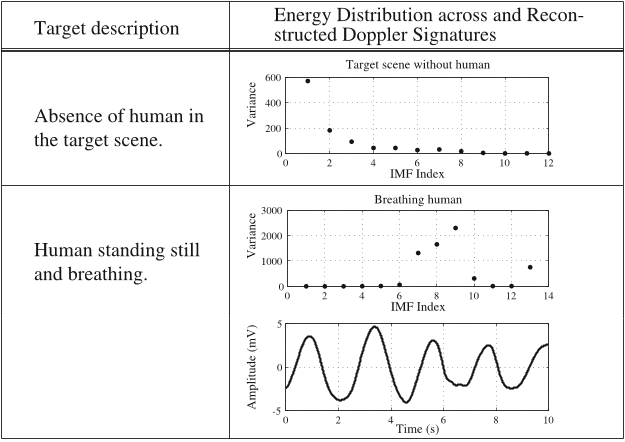




Did you find this useful? Give us your feedback











6 citations
...There has also been work using so-called micro-Doppler, to analyze smaller scale movements with the through-thewall method, from arm movement (isolated from torso movement) [5] to the small bodily fluctuations associated with breathing and heart beats [6]....
[...]
6 citations
...Therefore, multistationary human-targets identification and localization, a key problem limiting the application of life-detection radar, has not yet been resolved [15,16]....
[...]
6 citations
5 citations
5 citations
...EMD has been mainly used for classification of activities [44] [42] and removing noise [43]....
[...]
18,956 citations
...The EMD-HS algorithm (also called the Hilbert Huang Transform (HHT)) was proposed in [13] for analyzing non-stationary signals originating from non-linear processes....
[...]
...The EMD-Hilbert spectrum (referred to hereafter as EMD-HS) algorithm is a recent development in the field of time-frequency analysis [13]....
[...]
...The instantaneous frequency of this analytic signal is defined as the derivative of the instantaneous phase defined in [13]....
[...]
...Such functions permit the application of the Hilbert transform and the corresponding definition of instantaneous frequency in [13]....
[...]
2,304 citations
...The application of the EMD algorithm to characterize random noise has been discussed in [20]....
[...]
...Similarly, the energy of the IMFs also reduces according to an exponential rule [20]....
[...]
1,306 citations
939 citations
...The measured trajectory is given in [23]....
[...]
...The results in [23] and [24] suggest that a human arm moving in response to a stimulus follows a similar velocity profile across different human subjects and trials....
[...]
...In this section, we propose a model for the motion of the human arm, primarily based on [23]....
[...]
...In [23], the authors monitored the velocity of the human arm using a set of light emitting diodes placed on the human arm....
[...]
...Figure 2 shows the idealized velocity profile of human arm movement considered in [23]....
[...]
808 citations
...The velocity profiles for the movement of the human arm in response to different types of stimuli are presented in [24]....
[...]
...The results in [23] and [24] suggest that a human arm moving in response to a stimulus follows a similar velocity profile across different human subjects and trials....
[...]